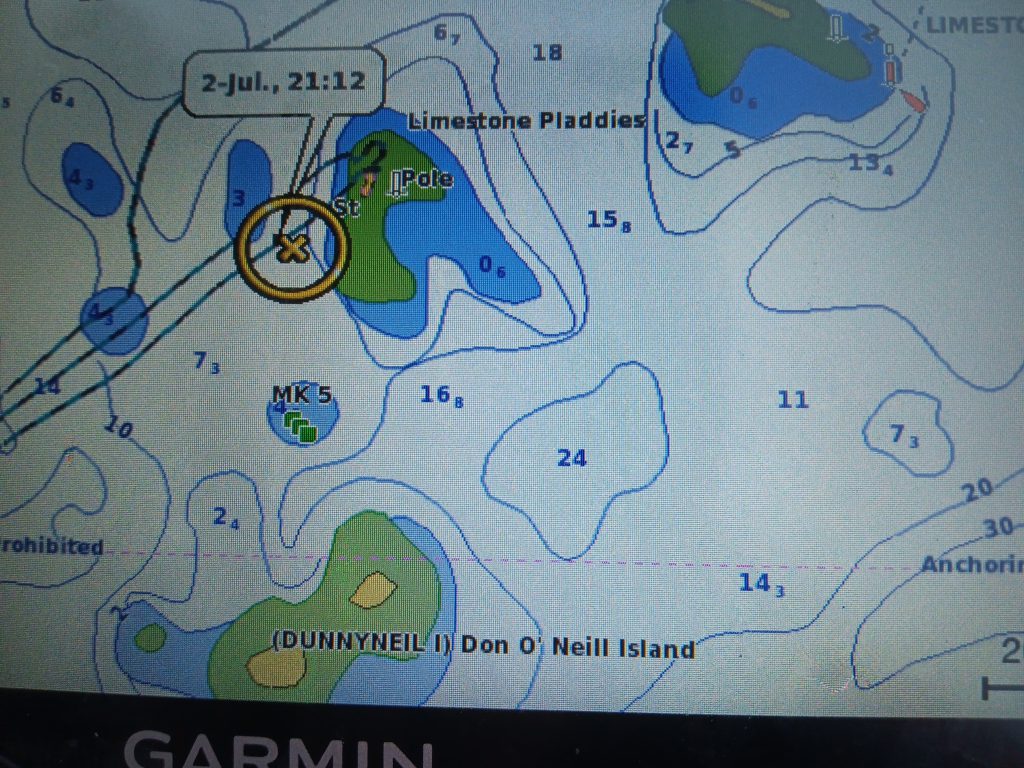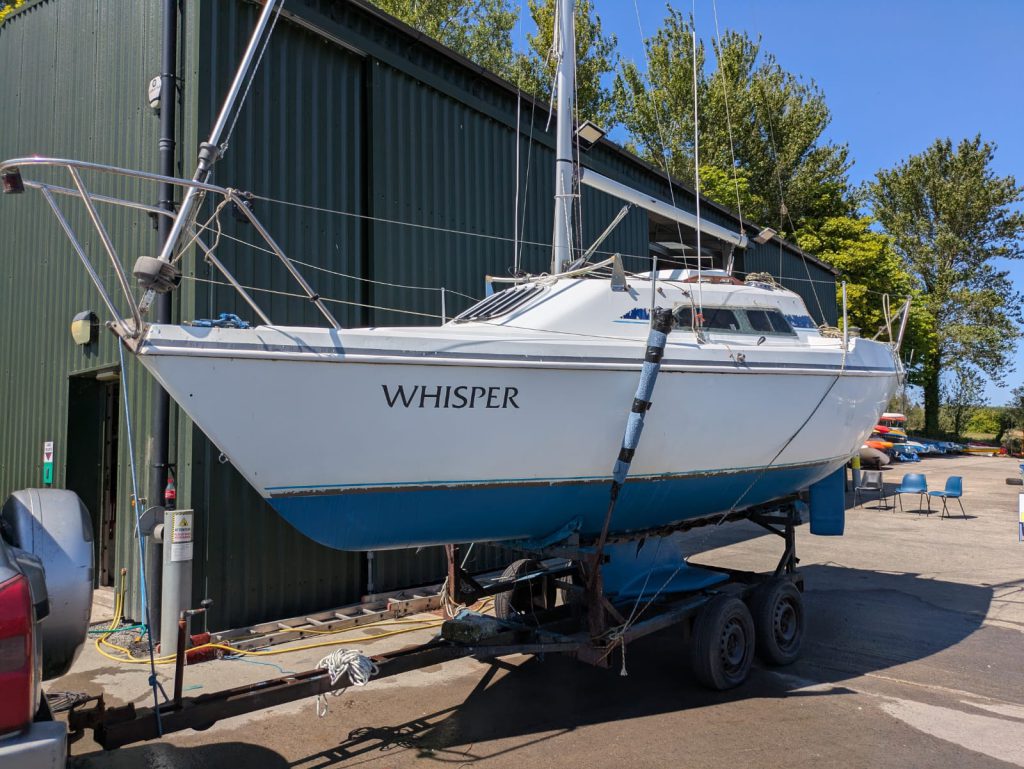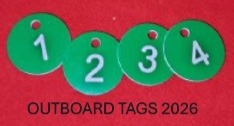This report concentrates on the detail of a local yacht grounding on a Strangford pladdy. It gives much of the detail. A pladdy is a shingle or sand bank often covering with high water.
Grounding 02 July 25 close to Limestone Rock
A cruiser style yacht with 3ft draft grounded during Wednesday night racing.
This was both a surprise to the helm and owners and also to our club as we know these waters intimately.
The yacht was stuck fast and could not be dragged of the shingle bank. The tide level was two hours into its outgoing fall. The yacht was left anchored and crew recovered ashore for the night. A return in the morning found the yacht afloat at anchor. Fortunately no personnel were harmed and the yacht is to be examined. The grounding occurred at slow speed about one and a half knots. The helm was using a chart plotter / chart and there was no indication of this shingle bank/sand bar being so close to the surface.
The grounding was attended by both the club taxi boat ie the Chevvy and by the club RIB the Osprey. The chevvy driver said “When we arrived Whisper (the yacht) was high and dry on the shingle bank and about five inches out of the water”. This was about 20:00 to 20:30. Certainly a time stamp of 20:43 can be applied as missed phone calls have been logged. Our club vessels dealt with the grounding, dealing with the difficulty of approaching the yacht due to the shallows – it was only possible to approach it from its stern.
It was near the end of racing and our RIB, which is mainly to cover dinghy safety, had to stay with the last dinghy on our course before attending.
The pic below is highlighted to show the area.

A closer view provided by the helm

The above enlargement shows the area in which the grounding occurred.
The helm of the grounded yacht has provided the following:-
As discussed, we appear to have encountered an uncharted sandbar. Based on our visually assumed position (assuming accurate navigation, which we believe to be the case), the vessel made contact with a shallow area not marked on existing navigation charts.
Approximately two hours after high tide, water depth in the immediate vicinity was observed to be less than 3 feet. Our vessel, Whisper, was nearly drying out prior to departure, indicating extremely shallow conditions. The shallow area appears to be relatively small—approximately 20 square metres—with a surrounding region of reduced depth (~10 feet) extending around it.
The seabed consisted of soft sand and shingle in which we buried the keel at least 1.5ft deep into the sandy surface. Transitioning abruptly from adjacent deep water. No significant weed growth was noted. We suspect this may be a mobile sandbar, but if so is our first direct encounter with such a feature.
Unless we were significantly off course and inadvertently navigating over Limestone Pladdy (which we are highly confident we were not), it is likely that this is a newly formed or shifted sandbar.
Mariners are advised to exercise caution in this area.
End of helms account
Putting this into the context of our local experience – groundings within Strangford are a preferably infrequent occurrence. The author in about 40 years sailing has been grounded on the NE corner of Dunny Neil in a 32 ft Beneteau (in a rising tide) and also on McBurney Rocks during a regatta (successfully pulled off by a safety boat). Our club also have logged an incident when a large yacht was blown onto Dunnyneill Is and was attended by the Portaferry Lifeboat – their write up is available. Club taken pictures have not been widely shared of this to save embarrassment for the yacht owners and crew.
Putting this into context of sea bed movement – major storms can alter the seabed especially (noticeable) at or near the surface, surf beaches would be a prime changing location.
This particular area in this report will be examined by the club. The description of the obstacle as – “The seabed consisted of soft sand and shingle in which we buried the keel at least 1.5ft deep into the sandy surface.” Also noted no vegetation – seems to indicate a recent formation of the bed.
In concluding most yacht observe the rule of thumb – “keep off the green” when referring to the charted depth. On this occasion here seems to have been no green (where they thought they were) on the chart in this area. More investigation and details to follow.
Note – There were some crews awaiting taxi to be brought ashore as we left the race area in our tender, hopefully this account may help them understand where our two support boats were.
Note VHF radio within the lough is challenged to contact the coastguard and mobile phones often are substituted. The use of a mobile phone means the conversation is not broadcast so others do not overhear it having both positive and negative benefits.
HW Quoile – Next tide morn Thur
| Next tide Thursday 3 July at Quoile Barrier | ||
| Type of tide | Time (BST) | Height (metres) |
| Low | 01:32 | 0.8 |
| High | 07:27 | 3.4 |
| Low | 13:57 | 0.6 |
| High | 20:14 | 3.0 |
Outcome
The yacht was left uncrewed overnight with an anchor and chain laid to windward so that it it lifted on the tide it would be retained close to its position.
On the Thursday morning afterwards about 06:30 our club RIB again attended the yacht, back with the owner/helm and the yacht was afloat when they arrived and intact. It was returned to its normal mooring in Holm Bay.
Just completing the detail a snap taken from the plotter on our RIB is shown below. It identifies the position of the grounding, clearly Limestone Pladdy and the yellow cross cursor shows that on 2 Jul at 21:12 it was returning to our club. (that’s after removng the crew from the grounded yacht)
The pole marked on the chart seems not to be there.

Also of note on the chart above is the position of our racing mark no 5, and Limestone Rock.

The yacht in the grounding above
The more investigation has shown that there is not a new pladdy or sand bank but rather it was a grounding on a known lough feature which may have lost its pole.
Thankfully embarrisment seems to have been the only negative after effect plus
a warning to others – NAVIGATION needs continual attention when at sea.






